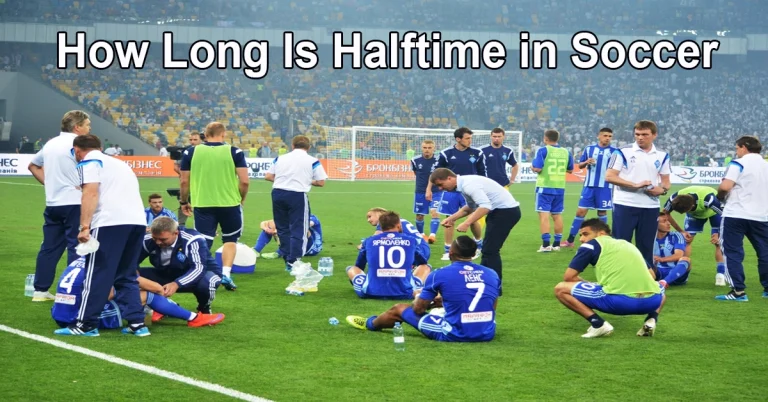How Many Soccer Players Are on the Field? A Complete Guide
How Many Soccer Players Are on the Field? It is a question I hear often from novice players. This has a combined 22 players on the field in a typical soccer match with each team having 11 players.
This team consist of a goalkeeper and many other playing positions that are tend to do goals score and secure their ass people from the opposing tam. Knowing about the players of the game is important simply to make sure you understand just a how many players are on a field at one-time and can appreciate whether not or not this system works as well as possible. The amount of players drastically changes how the game style are be it on professional leagues or simple custom games.
Introduction to How Many Soccer Players Are on the Field
Football is one of the many sports widely popular worldwide, having pursued and viewed by millions upon millions across nations. It is that the rules are simple whilst the strategies can be elegant and complex. One of the key concepts in this game is how many players to consider in certain situations. Which, Is an important point in understanding how teams play & why positioning matters, and why the game is so fluid? Surely there is not a full complement of eleven soccer players out on the pitch? That just makes you appreciate the balance and structure that is involved with this game, which in turn adds another layer of excitement to it when watching.
Standard Number of Players
There are 11 players available in every team so 22 player on the field. Generally, this 11 vs. 11 setup is used at the professional level and international tournaments, as well as in most adult competitions. The group is split up by roles into the team.
The goalkeeper is the only player who can use their hands in the penalty area, and whose role it is to defend the goal.
Backline:- Backline are created by defenders, using this back line they prevent the opposite team from scoring. Midfielders are defenders first and foremost; they exist to link defence with attack by controlling the game in the middle of the park. And forwards or strikers are placed just in front of the goal on their opponents, and are mostly scoring oriented players. These together make soccer as dynamical and engrossing.
Complete Guide to NBA, College, and International Game Duration
It is played by two teams of 11 players, regardless the level of play or the type of soccer. Often in youth soccer, you will see teams with fewer players E.g. 7-a-side or 9-a-side to match the children’s capabilities but to also make the game more enjoyable and engaging for kids. This is to enhance the skill development and increase player participation.
Variations in Player Count
Futsal is a popular indoor variant of soccer that scales down to 5 vs. 5. Futsal is a fast-paced game played on a smaller field that benefits quick passing, close ball control.
7-a-side and 9-a-side soccer are also common with amateur leagues.Most smaller tournaments use them. These formats are played when appropriate space or player availability is limited, adding some flexibility to how people can engage while retaining the core aspects of teamwork and strategy.
Typical soccer rules here, though except that in soccer there are eleven players per side on the field and given a bench of substitutes too. The number of substitutes permitted is different for all competitions. Normally five substitutions per game are permitted but fewer may be allowed in some tournaments and in the majority professional leagues.
Substitutes and Bench Players
Soccer… eleven players on the field but each team also has substitutes (bench players) who can enter a game. The number of allowable substitutes is different in each competition. The maximum number of substitutions permitted in most professional leagues is five per team, although flags may be introduced that allow fewer.
The substitutes are a key component of what keeps the game ticking over. Substitutions: teams can replace tired players with substitutes, adjust tactics and also cover for an injured player. The introduction of new players can be the difference between gaining momentum, particularly fresh legs in the final 10 minutes of a game when fatigue has set in.
Please note that substitutes do not count as a player on the field except when they are subbed in. They are on the bench until they sub in and therefore don’t effect the official player count. Smart use of substitutions can be the difference in a game, giving teams tactical flexibility.
Impact of Red Cards on Number of Players
In soccer, a red card gets you ejected from the field and that means your team has fewer players on the pitch. After a red card is given, the team must play with one man down for the remainder of the match since no substitution can replace to player shown red. This means that the classic 11 vs. 11 game will be replaced by a 11 vs. 10 or even another reduced scenario where more players have to leave the field because of red cards.
Determining how to play a man down creates a number of tactical obstacles for the team that has lost an athlete. They have to change, usually seeing most go defensive to balance the fewer men they would have. They could well have to conserve energy, sit a little deeper and counter-attack rather than dominating the ball or pressing too high. A smaller number of players on the field make covering all lanes more difficult, and gives the opposition a better chance to exploit holes and score points. If you are the team with more players, this is where you get to dictate the pace and then score more goals.
Frequently Asked Questions
What team of players do you need to start a football game?
A maximum of 11 players is allowed on the field from each team, including a goalkeeper, and at the start of play the minimum required number are 7. There are 11 players in a standard team, but they can continue with as few as seven. A team cannot proceed with a game having less than 7 players and the game may be played as forfeited.
Is it legal for a soccer team to have less than 11 players?
No, a soccer team cannot play with less than 11 players if they get red cards or if they start with fewer players. Nevertheless, if 7 players are expelled from the team they will not carry on playing. Occasionally, the game would be called off, and the other team could potentially from it.
What it Brings to the Table: Player Count?
This is going to fundamentally affect the pace of game-play, as it instantly reduces the number of players running around. With the game balanced, both teams who have 11 players can play as they would like to. But in case of the one team having lesser players because of red cards or other reasons, it changes favour on the other side where there will be more players. When a team goes down 1 player, they often have to play more defensively, while the other team can keep the ball and make more chances. Fewer players forces the team to scramble and cover additional ground, a dangerous situation.
Conclusion
To sum up, each team in soccer is comprised 11 players, making a total of 22 on the pitch. Knowing this initial number of players is really important to begin understanding the game because each one is extremely necessary to its overall plan. The number of players may vary—kind of like substitutions or red cards in real-life soccer—and the format will not impact game-play. Once you know how tactics and the ever-changing elements of the game are impacted by player numbers, it will make you appreciate soccer even more. Then further your learning by looking at the different rules and strategies which make this sport so captivating, and enjoyable!










